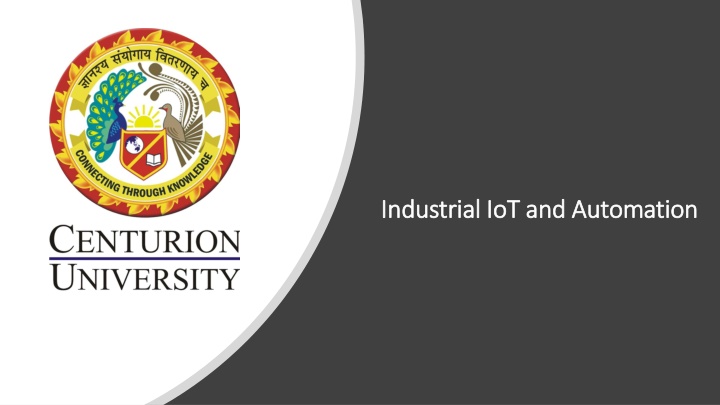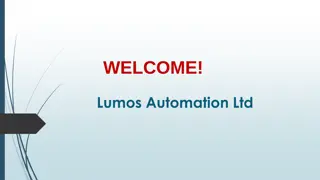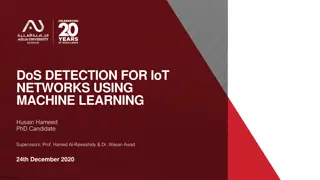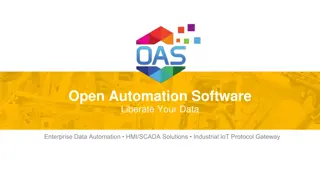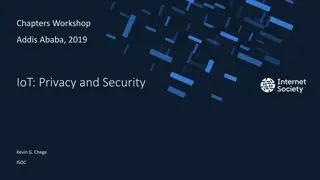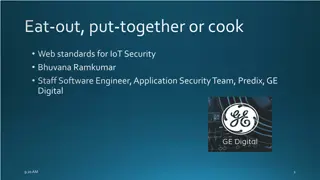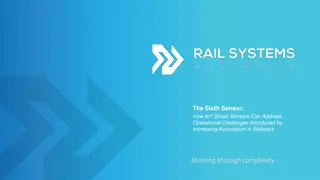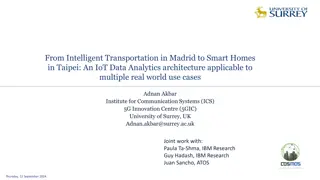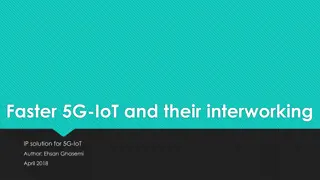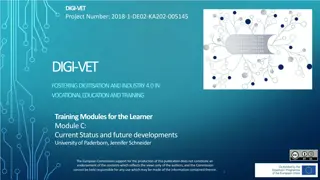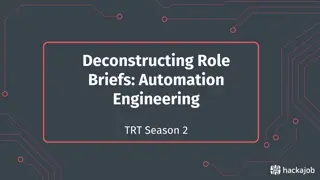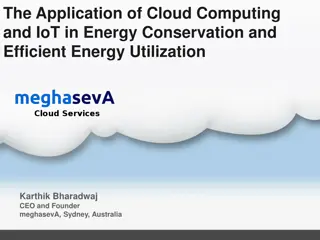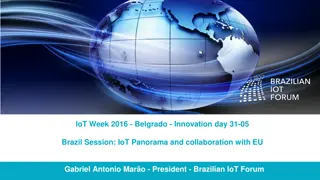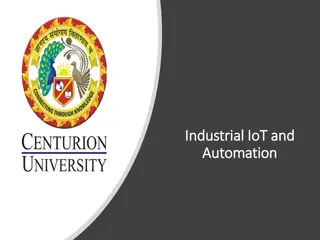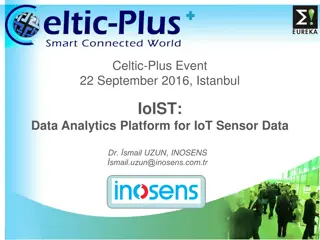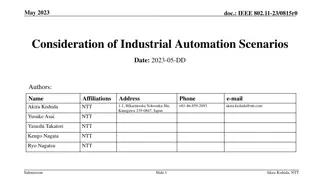Industrial IoT and Automation: Recent Developments in Networks and Security
This book on Industrial IoT explores the challenges, design principles, applications, and security aspects associated with industrial networks, IoT, and IIoT. Chapters cover topics like communication technologies, automation trends, cyber-security, and intrusion detection in IIoT networks. The book aims to provide insights for readers from diverse backgrounds interested in the evolving industrial automation landscape.
Download Presentation

Please find below an Image/Link to download the presentation.
The content on the website is provided AS IS for your information and personal use only. It may not be sold, licensed, or shared on other websites without obtaining consent from the author.If you encounter any issues during the download, it is possible that the publisher has removed the file from their server.
You are allowed to download the files provided on this website for personal or commercial use, subject to the condition that they are used lawfully. All files are the property of their respective owners.
The content on the website is provided AS IS for your information and personal use only. It may not be sold, licensed, or shared on other websites without obtaining consent from the author.
E N D
Presentation Transcript
Industrial IoT and Automation Industrial IoT and Automation
Reference Book We are all living in a connected world and Cisco predicts 500 Billion things of the IoT to be further included in this connection; meaning more automation, remote access and control to be infused in our everyday routines. This book, Industrial IoT: Challenges, Design Principles, Applications, and Security, aims at presenting the recent developments in the fields of industrial networks, IoT, and IIoT domains. Since readers of this book are likely to come from various backgrounds, being aware of the implicit structure of this book might be helpful. 2
The contributed chapters in this book cover a broad range of topics related to IIoT networks, including wired/wireless communication technologies, industrial applications, cyber-security, and intrusion detection. The book consists of three parts and six chapters, which I find a convenient way of presenting the overall material: We will start with introduction of preliminaries, design principles, and challenges of the IIoT. Chapter 1 introduces an overview of most of the networking, communication, and ICT technologies available in the industrial networks, whereas Chap. 2 presents wireless communication technologies that apply to IIoT and also discussed their unique challenges. 3
Chaps. 3 and 4 to introduce automation trends and applications of IIoT. Chapter 3 is dedicated to IoT-driven advances in industrial and commercial smart buildings, especially new advances at IoT-based industrial indoor/outdoor lighting systems. Chapter 4 introduces the automation trends in industrial networks and IIoT, including the most famous digital twin concept. 4
Chaps. 5 and 6 to stress on the cyber-security of IIoT. Chapter 5 presents the security of IIoT networks, especially within the decentralized cloud computing settings of the IIoT. Chap. 6 concludes Part III and the book by stressing on the detection of intrusions with data streaming concept. 5
Introduction 7 Figure 1: Shows transistor counts in microprocessors by date between (a) 1971 1990
Introduction 8 Figure 2: Shows transistor counts in microprocessors by date between (b) 1991 2010
Introduction 9 Figure 3: Shows transistor counts in microprocessors by date between (c) 2010 2019
Industrial IoT is nothing but IoT used in the Industrial Environment. First came steam and the first machines that mechanized some of the work our ancestors did. Next was electricity, the assembly line and the birth of mass production. The third era of industry came about with the advent of computers and the beginnings of automation, when robots and machines began to replace human workers on those assembly lines. 10
Industry 4.0 revolution can be summarized with one word: Connectivity. Connectivity will enable intelligent production with the proliferation of IIoT, cloud and big data. Smart devices can collect various data about indoor location, outdoor position, status information, usage patterns of the clients, etc. They have the ability not only in gathering information, but also sharing the information amongst intended peers. This will be beneficial in building an efficient manufacturing process in industrial environments and also in helping with the planned preventative maintenance on machinery. 12
The other benefit is in identifying errors in the production pipeline as quickly as possible since it is an important factor to reduce the production and maintenance costs. Industry 4.0 is also focusing on optimization problems in the industry by using smart devices to utilize data-driven services. Industry 4.0 and IIoT are used for complex task sharing, decision making based on collected data, remote access to machinery. Massive connectivity of the things and data collection/sharing capability of those promotes security to be a major requirement for the IIoT and Industry 4.0 concepts. 13
But as with any major shift, there are challenges inherent in adopting an Industry 4.0 model: Data security issues are greatly increased by integrating new systems and more access to those systems. Additionally, proprietary production knowledge becomes an IT security problem as well. A high degree of reliability and stability are needed for successful cyber-physical communication that can be difficult to achieve and maintain. Maintaining the integrity of the production process with less human oversight could become a barrier. Loss of high-paying human jobs is always a concern when new automations are introduced. And avoiding technical problems that could cause expensive production outages is always a concern. 14
